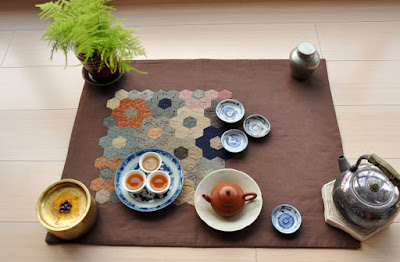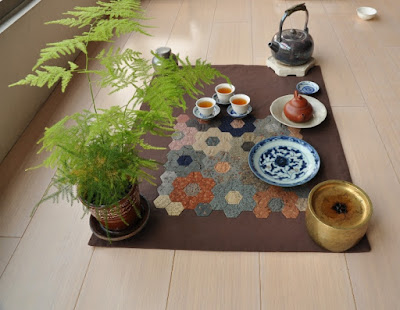I purchased this tea in early 2009, almost 7 years ago. Its aromas of wild, ripe raspberries were amazing and so was its energy and rock taste. This is what properly aged Hung Shui Oolong can turn into AND it doesn't require any re-roasting. All you need is patience, time and the great Hung Shui Oolong. And not only would you obtain something great after 19 years (in 2009), but it would continue to improve!
Today, I found that I still have a pack with 100 grams of this tea! It hasn't been re-roasted and I simply left it in its vacuum-sealed plastic foil (because I hadn't a fitting porcelain jar for it).
So, this gave me the opportunity to test the proposition that it's still improving with time,
The fragrances are still very similar. Keeping it vacuum-sealed is slowing the changes. However, the taste felt deeper and more powerful than before. Or maybe it's also my brewing that is getting better? But I still feel I obtained a more concentrated first brew than in the past. The taste and aftertaste were amazing for their mix of aged, mellow depth and fresh energy.
Top grade Oolongs are those who improve with age. And here age is measured in years or even decades! This is one of the things that makes Oolong so fascinating.
I am glad to make this San Hsia Hung Shui Oolong available again and let you taste for yourself how it has evolved.
The qinghua plate can be used as teaboat for the teapot or as chadian for the cups, when they are gathered for the pour. This protects the chabu from getting tea stains.
The mini plate have also 2 uses: as chahe to display the dry leaves before brewing, or as cha tuo (saucer) for 1 cup. Actually, you can also use them as a resting place for the cover of the teapot when you take it off before filling your teapot with boiled water.
















2 comments:
We are finding that the shelf life of all orthodox teas is much longer than we previously believed. As they age teas tend to grow sweeter and smoother. I think that unless your tea has garnered some moisture you should never re roast the tea, however. I find the extra roasting creates an off putting flavor. I would be inter ested to find out why the teas taste better. Perhaps the catechins are subdued by aging while the L theanine remains strong. But I am only taking an educated guess in that statement.
Thank you
Terry,
Thanks for sharing your experience about aged teas. One of the reasons is that, indeed, the catechins (the tannins) are becoming smoother with time. Also, age lets different flavors appear over time. If the moisture content of the leaves is high, it can turn sour and unpleasant. But if the leaves are 'orthodox' and well dried, then sweet, deep scents can appear.
Post a Comment